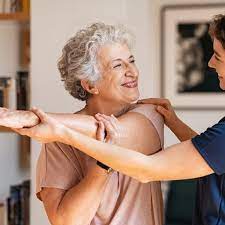Anyone who’s tried joining a new club knows it’s trickier than it sounds. Walking into a room full of strangers can be intimidating—palms sweaty, heart thumping. But those first few awkward conversations often grow into real friendships. Social participation is more than “just being there”—it’s about feeling included, valued, and connected.
For people with disabilities, structured social programs can open doors that otherwise feel closed. Programs like NDIS social groups aren’t just about keeping busy. They’re about creating real pathways to friendships, confidence, and independence.
Let’s break it down.
What Does Social Participation Actually Look Like?
Social participation isn’t a one-size-fits-all thing. Depending on your interests (and energy levels!), it could mean:
- Joining a weekend soccer team
- Volunteering at a local animal shelter
- Going to a community art class
- Attending coffee catch-ups through an NDIS social group
- Participating in music therapy or drama workshops
- Simply meeting mates for a movie night
It’s the simple but powerful act of being part of something. Whether you’re painting canvases or swapping jokes over lunch, participation builds invisible but vital social bridges.
Why Are NDIS Social Groups Important for Participation?
You might think: “Well, can’t anyone just go out and join a club?” In theory, yes. In reality? Not so easy for many people with disabilities.
Transport hurdles, communication barriers, physical access issues, and even social stigma can turn everyday activities into minefields. That’s where NDIS social groups come in.
These groups are intentionally structured to remove barriers:
- Support workers help with communication and mobility.
- Venues are accessible and inclusive.
- Activities are designed to suit varying abilities and interests.
- Group dynamics are gently guided to encourage friendships (no one left sitting in the corner).
The difference between showing up and truly belonging? It’s often support like this that makes it happen.
As Australian Human Rights Commission research highlights, inclusive participation is critical for reducing social isolation and improving mental health. You don’t just attend. You connect. You grow.
What Are Some Examples of Activities in NDIS Social Groups?
Every group will have its own vibe. Some are lively and adventurous. Others are calm and creative. Here’s a peek at the kind of activities people often enjoy:
- Cooking classes – learning new skills (and eating the rewards!)
- Fitness sessions – from Zumba to gentle yoga
- Creative arts – painting, sculpting, even graffiti workshops
- Excursions – zoos, museums, beach days
- Skill-building – learning budgeting, public transport navigation, or tech basics
- Music jam sessions – because few things bond people like singing badly together
The goal isn’t just fun (although there’s plenty of that). It’s about boosting confidence, building communication skills, and practising independence in a safe, supported environment.
Anyone who’s joined a group event knows: it’s not just the activity. It’s the laughter, the inside jokes, the friendships that start when the “official” part is done.
How Does Social Participation Support Personal Growth?
It’s easy to underestimate the impact of simply “getting out there.” But participation is like lifting weights for your social muscles.
Some real-world changes you’ll often see:
- Confidence grows: Starting conversations becomes easier.
- Skills develop: Managing money, planning outings, communicating needs.
- Friendships form: Real, genuine bonds, not just polite small talk.
- Independence strengthens: Knowing you can navigate social spaces boosts overall self-reliance.
- Mental health improves: Community connection is a powerful antidote to loneliness.
There’s something deeply human about needing to feel “part of the pack.” It’s not a luxury. It’s a basic human need.
Can Anyone Access NDIS Social Groups?
If you’re an NDIS participant, you’re likely eligible to join NDIS social groups. Some programs are fully funded through Core Supports, while others might be covered under Capacity Building budgets.
It’s worth chatting with your Support Coordinator or Plan Manager to understand what’s available—and what fits with your goals.
And remember: you’re allowed to try a few different groups before finding one that feels like “your people.” (Finding the right vibe sometimes takes a little shopping around. Totally normal.)
FAQ: Social Participation and NDIS Groups
Q: Can I bring a support person with me?
A: Usually yes! Many NDIS social groups welcome support workers or companions—check with the group organiser.
Q: What if I have anxiety about meeting new people?
A: Completely normal. Start slow. Maybe attend a few sessions just to observe. Support workers can also help ease the first-meeting jitters.
Q: How often do NDIS social groups meet?
A: It varies! Some run weekly, some fortnightly, and others as one-off events. There’s usually something for every schedule.
Final Reflection
At its heart, social participation isn’t about doing. It’s about belonging. Whether it’s sharing a coffee, painting a canvas, or kicking a footy around, those small shared moments stack up to something much bigger: a life that feels rich, full, and connected.
And for people accessing NDIS social groups, it’s a way to push past barriers that too often isolate—turning everyday activities into real opportunities for growth, laughter, and lasting friendships.
If you’re curious to explore more about inclusive programs that foster connection, you might enjoy learning about the group activities programs available through YMCA Inclusion Services.

